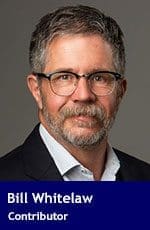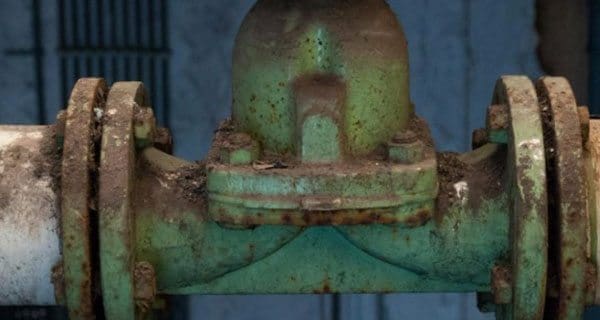 Alberta has a skeleton in its closet no one really wants to talk about. Even when we do, the bone rattling isn’t necessarily good talk.
Alberta has a skeleton in its closet no one really wants to talk about. Even when we do, the bone rattling isn’t necessarily good talk.
The problem is Alberta’s steadily-growing ranks of aging oil and gas assets that haven’t been properly readied for (permanent) retirement.
The liability those aging assets represent has burgeoned steadily over recent years. They include wells, pipelines and other infrastructure. Many haven’t had the care and attention that the provincial regulator requires to ensure they don’t represent environmental and economic liabilities.
Wells that haven’t been formally abandoned are perhaps the most potent symbols of this problem. In some cases, the owners have long disappeared and the liability falls to the upstream sector through its Orphan Well Association program to clean up. In other cases, assets remain inactive on balance sheets but there’s neither the corporate will nor dollars to invest in end-of-life care.
Alberta doesn’t specify when companies have to activate or abandon inactive wells. That results in kick-the-can-down-the-road thinking. And the argument that many inactive wells could have new lives, say at higher commodity prices, is largely spurious. The data doesn’t support that thesis.
Meanwhile, the doomsday liability clock keeps ticking while the costs associated with abandonment also creep forward.
More recently, the Alberta Energy Regulator (AER) has clamped down on the most egregious offenders (come on down, Lexin Resources Ltd.) and has taken – and is taking – steps to stem the impact of this rustbelt tsunami by tightening the regulatory framework. This includes a laser focus on their financial wherewithal to take care of their future obligations. It’s telling that more than 300 companies on record with the AER have liabilities that trump their assets.
In fact, a few bad apples have tainted the barrel – for example, by using bankruptcy to walk away from liabilities. Of course, the sector’s cyclical nature also plays a part. As a result of the recent downturn, many operators can’t pay for their asset retirement obligations.
For geologist Juli Rohl, the cloud of the sector’s downturn has a silver lining. It was the catalyst for her to take to action on something that had long bedevilled her: how to think differently about those assets and their life cycles.
For Rohl, this represents a business opportunity and a social challenge.
So along with partner Shawna Stirrett, she formed ReGenerate Alberta.
They asked themselves: What if Alberta’s oil and gas assets could be re-imagined and repurposed in a way that redefines their life cycles? That breathes new life into aging iron and decrepit well sites? That generate new dollars flowing into old assets?
ReGenerate’s team understands there is no single silver-bullet answer. There is, however, a bolder and more imaginative way to get the necessary discussions stimulated.
Rohl and Stirrett reflect on ReGenerate’s mission:
What in your view is required to reset the conversation around the way the sector thinks about its assets and their management?
We think the turning point will come when the sector stops thinking about their older assets as something to be gotten rid of – as a liability – and starts thinking about them as potential opportunities. That could mean finding ways to convert a ‘waste product’ into something that can be sold (for example, the lithium that can sometimes be found in produced water), or converting existing infrastructure into a something that’s valuable to a community (example: converting an oil and gas well into a geothermal heat source for a community).
When one or two companies start to do this successfully, it will reset the conversation in the sector and other companies will start looking at their asset management programs differently.
What gives you hope we’ve reached a positive pivot point?
The most important thing that gives us hope is the growing acknowledgement that the status quo is not sustainable and that the current clean-as-you-go model will never suffice.
While some are in denial about this, it’s causing many companies to broaden their scope and redefine themselves as energy companies. It’s encouraging government and regulators to look for new asset management incentives, and it’s galvanizing individuals and organizations to search out creative solutions through groups like the Energy Futures Lab.
People want to build a better future and be part of something meaningful and, given the resource development expertise in this part of the world, this is a natural issue for them to be drawn to.
How would you recommend the sector start promoting and amplifying its change in thinking? As an industry more largely? Or by individual leadership companies?
We think it’s going to be come down to the leadership of companies and individuals. Once a few key people and companies can practically demonstrate that change is something to be capitalized on and that there are opportunities to be found through new ways of thinking, the change will be amplified.
Simply talking about these issues – without demonstrating that a different approach can be economically, environmentally and socially valuable – will accomplish little.
What are your thoughts on the overall economics of such a fundamental change? What do you think it will take for companies to see the upside?
There have been many studies done in Europe on the financial value of introducing a circular economy framework and those same principles can be applied to the energy sector. It may be that this will happen gradually and will start by companies thinking about how to create value by reducing their liability expenses.
An example of this is when companies build with the end in mind and are able to find efficiencies by planning for the decommissioning of their assets even during the build phase of a project. Eventually, those companies may take this further and will start thinking about how to convert their liabilities or waste products into salable assets that actually add revenue to the bottom line.
It doesn’t have to happen overnight; even a slight change in approach has the potential to bring upside to a company.
In part four: Kinetica, a part of Calgary Technologies Inc. (CTI).
Bill Whitelaw is president and CEO at JuneWarren-Nickle’s Energy Group.
The views, opinions and positions expressed by columnists and contributors are the author’s alone. They do not inherently or expressly reflect the views, opinions and/or positions of our publication.




